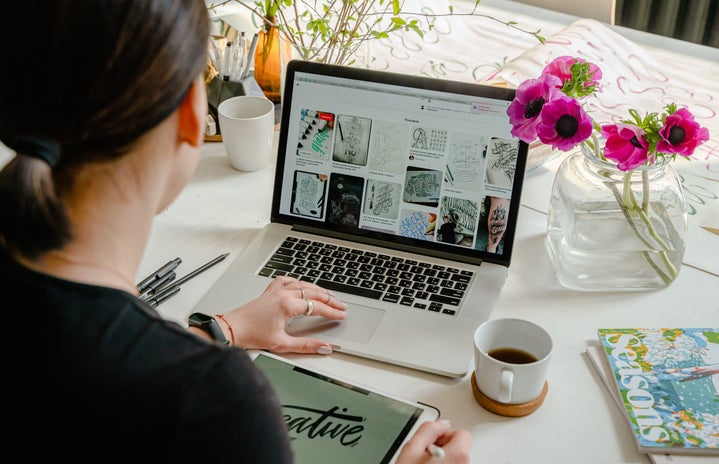For some, Pinterest has been a staple in our lives since preteenhood. If you’re not just scrolling through because you love to see all there is to browse, you might use Pinterest to show a reference picture to your nail tech or to look back at when planning to decorate a new space.
If you simply don’t use it much or are just unfamiliar, you are missing out on possibly the most productive, favorable, and least destructive form of social media in our culture today.
For Those Who Don’t Know
Over the span of around a decade, Pinterest users have uploaded millions of images to the platform, creating a large, diverse collection of pictures for unlimited inspiration for subjects like style, beauty, home decor, recipes, weddings, parties and more.
The app has an easy-to-use interface with organizational tools that allow one to “pin” pictures and save them for later reference, with the option to divide their saved ideas into segments called “boards.” Users can also divide them further into sub-segments called “sections” allowing for utmost clarity when returning to ideas and incorporating them into life.
Not only is its premise an endless, organized and spaced-out collage, but opening and scrolling through Pinterest is objectively pleasing to look at; all pictures on the home feed are rounded out and placed into symmetric columns. Thanks to its phenomenal algorithm, users can scroll through endless images that are fine-tuned to their individual preferences.
So What Makes Pinterest Better Than the Rest?
Pinterest is social media without the social—per se. Today’s social media landscape runs on user feedback: replies, retweets, comments, likes, and more. While these things have room to be constructive, a lot of the time they have negative consequences including dismissive interactions with other users and harmful fixations on popularity.
Although Pinterest provides the option to comment on and “Love” certain posts, the app isn’t structured around the popularity of an individual post but rather building your own portfolio of ideas, goals, plans and desires. With that said, you still have the option to add friends and share pins through the app’s private messaging. Users can even collaborate on a shared board in which both involved can add pins, promoting growth and community.
Whether you have a collection of studio apartment inspiration photos, a study abroad moodboard or new curly hairstyles you’d like to try, when using Pinterest you are bringing your goals and aspirations onto “paper” in a sense and putting a new positive purpose to social media. This constructive platform encourages self-reflection instead of leaving room for comparison: “I’m going to make this my life someday” as opposed to “I wish I had their life.” While that contrast might seem dramatic, it’s only a generalized version that’s applicable to even the most specific end goal one might have.
Even with its immense popularity, Pinterest is still an extremely underrated tool in building a positive lifestyle, encouraging productivity in creating an ideal and attainable life you want for yourself, whether it be 10 days or 10 years from today.
With its pleasant interface and limitless inspiration, Pinterest allows you to organize your life in a clear, aesthetic and positive way, a platform that is so necessary in a world where social media can otherwise be so toxic.


